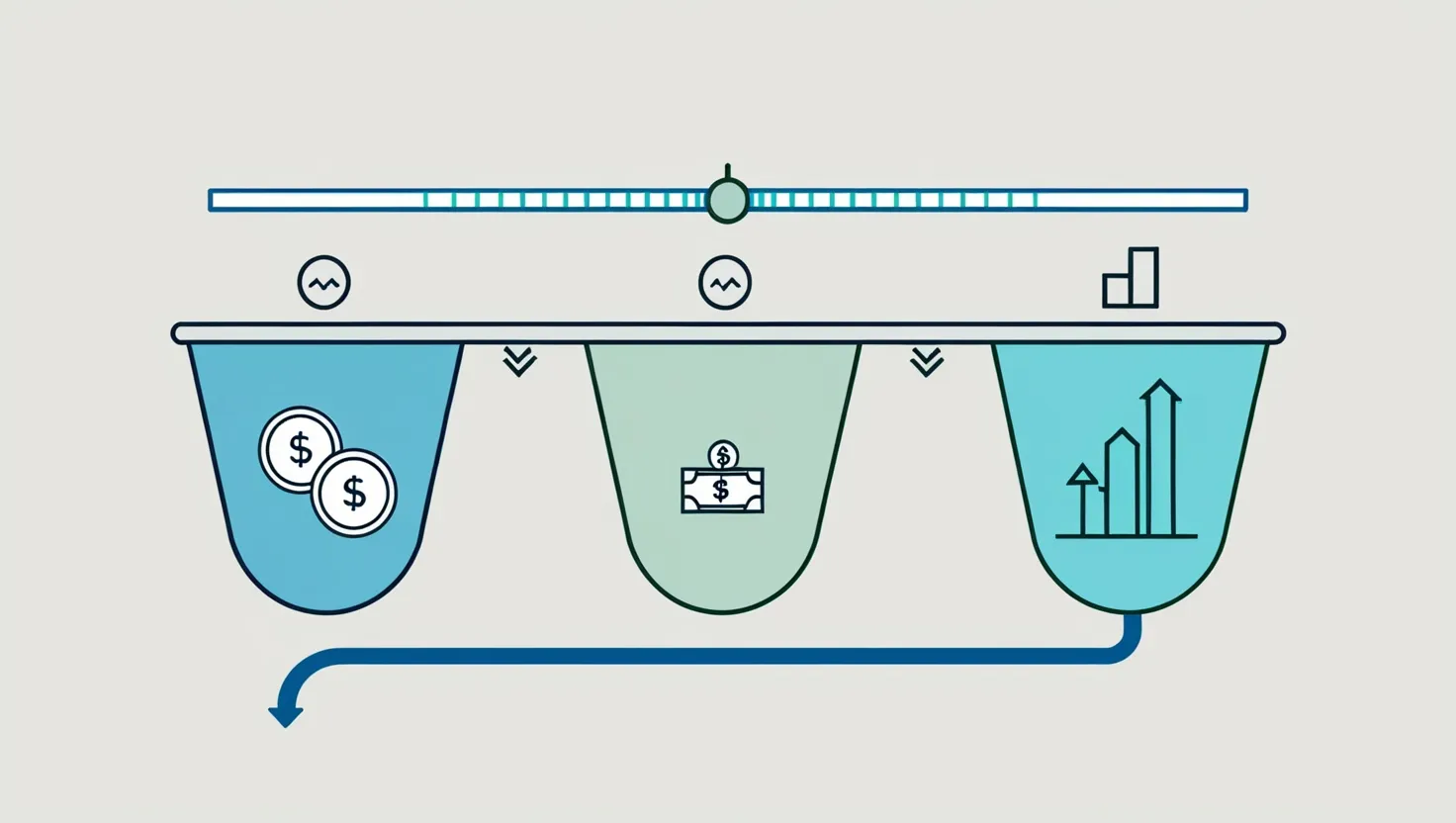Climbing the Retirement Ladder: Mastering the Roth IRA Conversion Strategy
Ever dreamed of retiring early or having more control over your retirement savings? Well, you're not alone. Many folks are turning to a nifty little trick called the Roth IRA conversion ladder. It's like finding a secret passageway to financial freedom, and I'm here to spill the beans on how it works.
Let's start with the basics. A Roth IRA is like a magical piggy bank where your money grows tax-free. You put in money you've already paid taxes on, and when you're ready to crack it open in retirement, you don't owe Uncle Sam a dime. Pretty sweet, right?
Now, here's where it gets interesting. The Roth conversion ladder is a way to move money from your traditional retirement accounts (like a 401(k) or traditional IRA) into a Roth IRA. It's like upgrading your coach ticket to first class, but for your money.
Why bother with this financial gymnastics? Well, it's all about timing and taxes. By converting a little bit each year, you can spread out your tax bill and potentially pay less overall. Plus, you're setting yourself up for tax-free withdrawals down the road. It's like planting money trees that'll bear fruit in your golden years.
But hold your horses – there's a catch. The IRS isn't just going to let you waltz away with all these tax benefits without a few rules. The biggie is the five-year rule. After each conversion, you've got to wait five years before you can touch that money without penalties. It's like aging a fine wine, but with cash.
This strategy is a godsend for the early retirement crowd. You know, those FIRE (Financial Independence, Retire Early) enthusiasts who want to ditch the 9-to-5 grind before they're eligible for senior discounts. The Roth conversion ladder lets them access their retirement funds early without getting slapped with hefty penalties.
So, how do you actually do this? First, you need to take a good, hard look at your financial situation. What's your current income? What tax bracket are you in? When do you want to retire? These are the ingredients for your Roth conversion recipe.
Once you've got that figured out, it's time to open a Roth IRA if you don't already have one. Think of it as your new financial home – cozy, tax-free, and ready to welcome your converted funds.
Next up, you'll need to decide which funds to convert and how much. It's like choosing which clothes to pack for a long trip – you want to pick the ones that'll serve you best. Maybe start with accounts that aren't performing so hot or ones that could really benefit from tax-free growth.
Now comes the tricky part – timing your conversions. You want to convert enough each year to make it worthwhile, but not so much that you're bumped into a higher tax bracket. It's a delicate balance, like trying to stuff your suitcase without going over the weight limit.
Speaking of taxes, don't forget you'll need to pay them on the amount you convert each year. It's like buying a ticket for that first-class upgrade – there's an upfront cost, but the long-term benefits can be worth it. Make sure you've got some cash set aside to cover these taxes without dipping into your retirement savings.
Let's break it down with a real-world example. Meet Sarah. She's 50 and dreams of retiring at 55. She's got a chunk of change in her traditional IRA and decides to start a Roth conversion ladder. Each year, she converts $20,000. By the time she's ready to retire, she'll have a nice little stash of converted funds that have completed their five-year waiting periods. It's like having a series of time-release piggy banks, each ready to be cracked open at just the right moment.
Now, let's talk about some common pitfalls to avoid. One biggie is converting too much at once. It's like trying to eat an entire cake in one sitting – you'll end up with a stomachache (or in this case, a massive tax bill). Instead, slice it up and enjoy it over time.
Another mistake is forgetting about the five-year rule. Each conversion has its own waiting period, so you need to keep track. It's like planting a garden – you've got to know when each crop will be ready for harvest.
The Roth conversion ladder isn't for everyone. If you're expecting to be in a lower tax bracket in retirement, it might not make sense. Or if you don't have the cash to pay the taxes on the conversions, it could put a strain on your finances. It's like any financial strategy – you've got to make sure it fits your unique situation.
But for those who can make it work, the benefits can be huge. Tax-free growth, more control over your retirement income, and the ability to leave a tax-free inheritance to your heirs. It's like giving your future self a high-five.
Implementing a Roth conversion ladder takes some serious planning and a good understanding of your financial landscape. It's not a set-it-and-forget-it kind of deal. You've got to stay on top of it, adjusting your strategy as your situation changes. It's like tending a garden – with regular care and attention, it can really flourish.
In the end, the Roth conversion ladder is all about playing the long game. It's not a get-rich-quick scheme, but rather a thoughtful approach to managing your retirement savings. It's about making smart moves now that'll pay off big time down the road.
So, if you're intrigued by the idea of climbing this financial ladder, take some time to dig deeper. Crunch the numbers, maybe chat with a financial advisor, and see if it's the right move for you. After all, your retirement is too important to leave to chance.
Remember, personal finance is just that – personal. What works for one person might not work for another. But with careful planning and a bit of patience, the Roth conversion ladder could be your ticket to a more secure and flexible retirement.
So, are you ready to start climbing? Your future self might just thank you for taking that first step up the Roth conversion ladder. Here's to smart planning and a retirement filled with financial freedom and peace of mind. Cheers to that!






